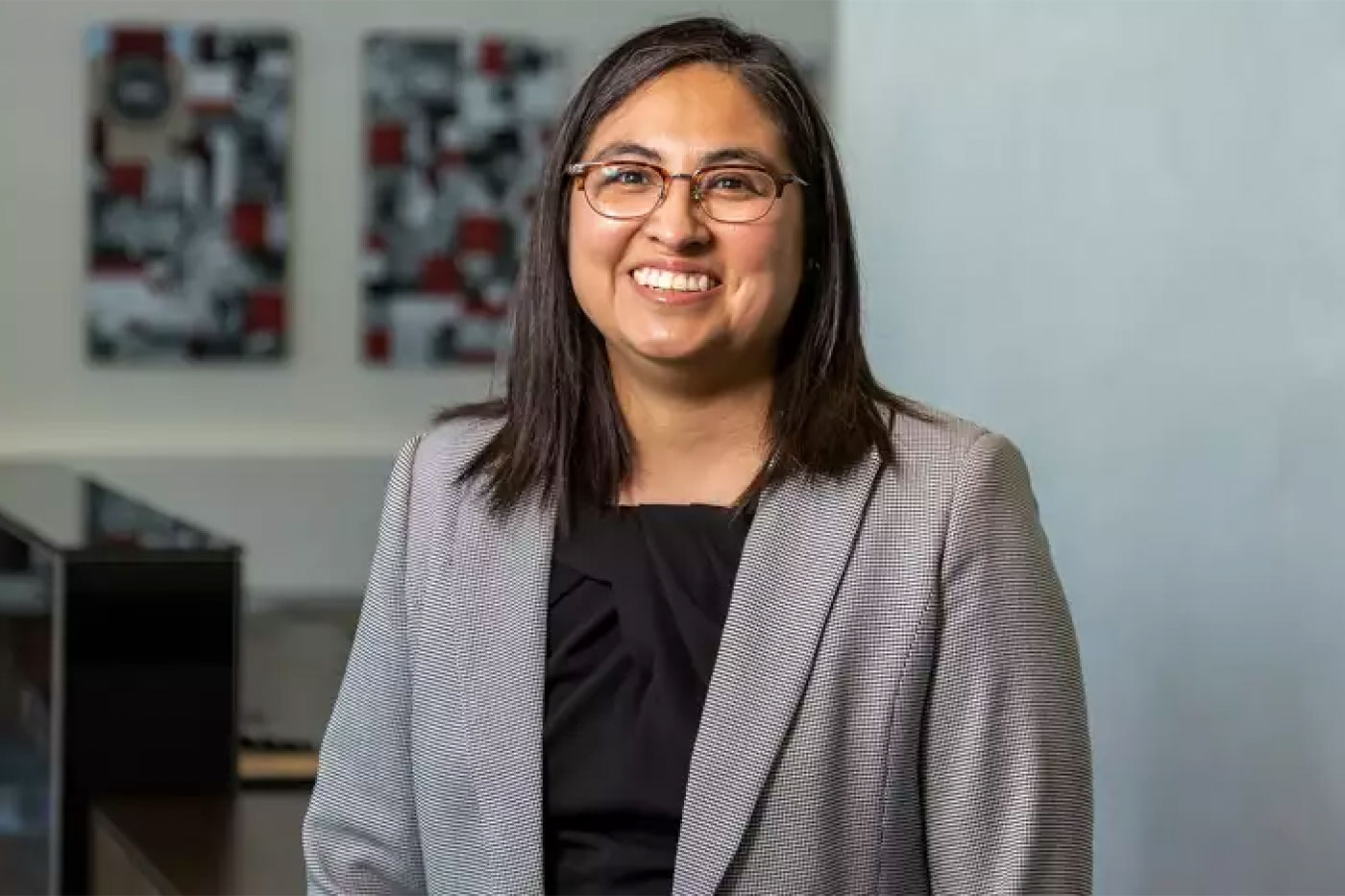Historically, Texas has ranked among the worst states in the U.S. for access to mental health resources for minors; an interdisciplinary team of researchers wants to change that.
Watching your child suffer while unable to help is one of the worst feelings a parent can experience, says Trent Seltzer, an associate professor in Texas Tech University’s College of Media & Communication.
It’s a pain he and his wife have felt trying to connect their teenager with a psychiatrist in Lubbock. Seltzer says they’ve been on waitlists for months, sometimes longer. He vulnerably explains the obstacles one of his children has traversed to gain access to care.
According to the American Academy of Child and Adolescent Psychiatry, each county in the U.S. should have 49 psychiatrists for every 100,000 children.
Lubbock and Midland counties each have less than 17 providers.
The surrounding 87 rural counties have zero.
“West Texas is referred to as a ‘mental health wasteland,’” Seltzer said, eyes on his desk.
Seltzer and other researchers at Texas Tech were unsettled by this description, so they set out to do something. They applied for a grant to fund research on communication strategies that might improve the recruitment and retention of providers.

In August, they were awarded $359,425 from the Texas Child Mental Health Care Consortium (TCMHCC) for their project, “Developing Communication Strategies to Support Recruitment & Retention of Child and Adolescent Mental Health Professionals in West Texas.” The consortium is a state-wide effort to improve mental health care and systems for children in Texas.
The consortium has five primary initiatives – telehealth services delivered at schools for children with psychiatric or therapy needs; a mental health support hotline for clinicians treating patients; funding for expansion of psychiatry fellowship positions; statewide research networks focused on youth suicide and trauma; and academic collaboration with community mental health agencies to improve retention of psychiatry trainees in Texas.
The Texas legislature has funded the consortium for three biennia now, in a bold statement about the importance of children’s mental health and the future of the state.
‘I Have to do Something’
Seltzer’s academic career focuses on public relations research. A decade ago, youth mental health wasn’t even in his periphery. But after judging a Distributive Education Clubs of America (DECA) regional competition in 2015, that changed.
Each group presenting from Plainview High School had one common theme – suicide prevention.
After noticing a pattern, the judges asked one of the last teams why this topic was so prevalent. The students explained there was an epidemic of youth suicide in their town.
At the beginning of 2013, Cargill Meat Solutions shut down as a result of a prolonged drought. As the plant closed, it took about $55 million in payroll with it. Roughly 2,300 people were suddenly unemployed, most relocating to make ends meet. Families were separated, with parents getting work wherever they could. Children were abruptly pulled from their school or left behind with extended family.

According to an article from the New York Times, shortly after the plant closed, a 16-year-old girl attempted suicide. Her mother had told her they’d have to move, and the girl did not want to leave her boyfriend.
She swallowed 34 sleeping pills.
Story after story like this one poured out from the DECA contestants months later when Seltzer visited.
The community was in crisis, and no one seemed to be intervening.
“I went home that night and bawled,” Seltzer recalled.
“I remember telling my wife ‘I don’t know what to do, but I have to do something.’”
He had two young children at the time. The older had just been diagnosed with a sensory processing disorder and was seeing a developmental-behavioral specialist. The whole situation felt immensely personal to the father and professor.
In response, Seltzer has taken his expertise in public relations and tried to impact those who struggle with mental health in Lubbock and surrounding communities, especially children.
A Worsening Crisis
Seltzer now invites mental health organizations as “clients” for students to work with in his campaigns course. The experience is the capstone project for the Public Relations & Strategic Communication Management program. He also has shifted his research agenda to focus on the role strategic communication can play in supporting adolescent mental health efforts.
“Youth mental health was already in decline before the pandemic,” Seltzer said. “Then you add in COVID-19, and things got worse.”
Texas was recently ranked No. 43 in the nation for mental health care. Not long ago it came in at No. 50. While there is still a long way to go, the consortium is taking steps to improve the shortage of resources.
With the exception of large metropolitan areas, when a child in Texas has had a mental health crisis, they’ve had to travel to another county to see a provider for assessment. Then yet another county to receive treatment. Many regions are creating programs that send counselors and nurses out to these rural communities, but even then, it may be weeks before they get there.
Telehealth services are becoming a common resource used in rural areas, but recruiting providers to actually live in those communities continues to be difficult.
Earlier this year, Nancy Trevino, director of the Texas Tech Mental Health Initiative reached out to Seltzer with an opportunity for interdisciplinary collaboration. Trevino’s job positions her to collaborate across the Texas Tech University System to create partnerships that further scholarship on this issue.

Texas Tech University Health Sciences Center (TTUHSC) has been involved with the consortium from the start. This year, the TCMHCC budgeted support to begin the New and Emerging Children’s Mental Health Researchers Initiative for research related to mental health. In addition to practice-based research, Trevino knew communications needed to be a critical part of this research. She encouraged Seltzer to apply for grant funding with a multidisciplinary team from Texas Tech and TTUHSC.
A New Approach
There is a lot of academic research that’s gone into child and adolescent mental health treatment, assessment and intervention. But most has been done through the lens of psychological and medical research.
“We have not academically studied how we communicate this need,” Seltzer said.
Obviously, there is a severe lack of mental health care professionals trained to work with children in Texas. But what researchers don’t know is why. How do professionals reach these decisions? Who or what influences them? How is rural mental health care talked about among potential providers and those pursuing degrees that could lead to employment in this area?
The project funds will support a multi-step process in which researchers will interview a large sampling of potential, current and previous child and adolescent mental health professionals.
Researchers will gauge existing beliefs, discover the decision points in academic and professional training, and what beliefs are best predictive of whether someone will want to pursue a career not only with children, but with those in rural areas.
By finding answers to these questions, the team hopes to develop messaging that is persuasive for those considering careers in these spaces.
The team includes five faculty members from the College of Media & Communication, one faculty member from the College of Education, and two faculty members from TTUHSC.
Charles Crews, an associate professor in the College of Education, is bringing his insight to the project.

Brought up in a family of educators and a previous school counselor himself, Crews understands how this crisis affects schools.
“We have an increasing number of kids suffering from mental health disorders and fewer and fewer people who can help,” Crews said.
“We’re asking too much of teachers, police officers and even pastors.”
Crews is glad adults want to roll up their sleeves and help, but the reality is, without an extensive amount of training (which is expensive and time-consuming to provide) these interventions usually lead to burn-out.
He also notes many topics and values that used to be taught at home are not being talked about as much. He says children have less community touchpoints than they did 30 years ago. Meaning the school system is having to become all things, to all kids.
In Texas, if a school has fewer than 500 students, it’s not required to provide a counselor. If they have a counselor, they’re not required to go through any formal training. While telehealth services are relieving some of this pressure, the research team wants to know what it would take for more providers to move to these communities.
Crews is optimistic about this possibility. He says he receives many students at Texas Tech from rural communities, and there’s something special about what they bring to the classroom.
“Students from rural areas have always impressed me with their empathy and patience,” he said. “Maybe it’s because the pace of life is slower there, but those students make great listeners.”
He hopes more of them will consider taking their education back to the communities that raised them.
Believing in a Breakthrough
While there is a crisis, there is also hope.
“Texas Tech is collaborative, and people want to solve problems,” Crews said. “There are always opportunities out here, you just have to seize them.”
For Seltzer, his family is still in the middle of the fight, but even with a lower number of resources in West Texas, they remain here. The community he and his family have built is priceless to them, especially in hard times.
As for the future of mental health in the region, whether researchers are in communication, law, psychology, medicine or any of the other departments tackling this issue, they are unified in their goal.
“We want kids and families to access the resources they need at the lowest level of appropriate intervention,” Trevino said. “This strategy can prevent larger crises and having kids go farther from home for more intensive care.”

